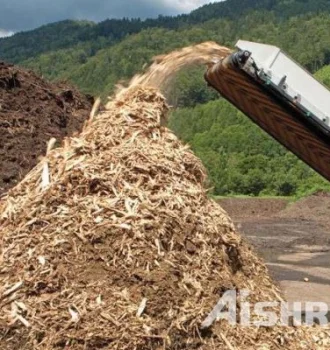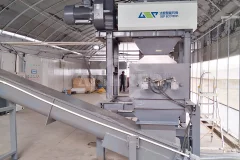
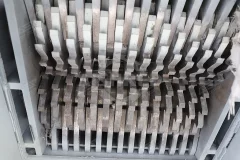
Small Multipurpose Waste Shredder in Dubai
2024-11-25Efficient waste management is critical for a sustainable future, and a multipurpose waste shredder is a versatile solution for handling diverse materials like food waste, plastics, tin cans, and more. In Dubai, where waste recycling and eco-friendly practices are gaining momentum, shredders such as the GD3 small type double-shaft shredder GEP Ecotech recently supplied are making a significant impact.GD3 Multipurpose Double-Shaft ShredderThe GD3 shredder is engineered for handling various waste types, offering robust performance and reliability:Compact Design: Ideal for facilities with limited space, while maintaining high shredding capacity.Versatile Shredding Capability: Processes materials like plastic bottles, metal cans, waste paper, and food waste with ease.High-Quality Components: Equipped with imported, premium-quality parts for durability and consistent performance.Modular and Intelligent Design: Features advanced modular construction and an intelligent control system for seamless operation and ease
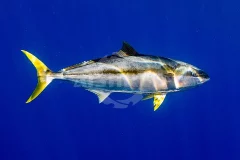
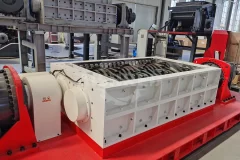
Tuna is an important food and sports fish, and also the most commercially valuable fish in the world. Tuna meat is low in fat and calories, rich in high-quality protein, polyunsaturated fatty acids, and other nutrients that balance the body's needs. But the tuna heads and bones are not easily consumed directly, so how to deal with them?Not long ago, an Australian client consulted us about tuna shredder equipment, which processes tuna heads and bones with a processing capacity of 30TPH. Although this capacity sounds quite large, after repeated confirmation with the customer, these fish heads and bones will be cooked first, and the bones are softer and more brittle, making them relatively easy to shred. The feeding size is tuna heads ≤250mm, tuna bones ≤600mm, and discharge size is about 50mm.After considering these parameters, we have recommended a suitable model of double shaft shearing shredder to the customer. We fully meet the customer's disposal requirements and have communicated with them in both
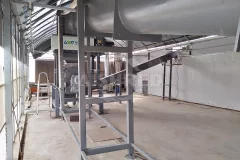
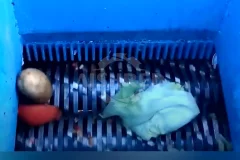
Designing a dual-shaft food waste shredder machine for vermicomposting involves creating a robust and efficient system capable of handling various organic waste types. This approach optimizes the vermicomposting process by producing a uniform and easily digestible material for worms, thus accelerating compost production and enhancing its quality. The dual-shaft design is particularly effective for shredding because it offers more torque and can process tougher materials compared to single-shaft shredders. Below is a comprehensive guide on developing such a machine, focusing on its design, construction, and application in a vermicomposting setup.IntroductionVermicomposting is a sustainable method to convert organic waste into high-quality compost through the action of worms. A dual-shaft food waste shredder is pivotal in preparing the waste by reducing its size, which facilitates quicker decomposition and easier consumption by the worms. This project aims to build a machine that is both efficient in shredding
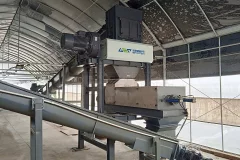
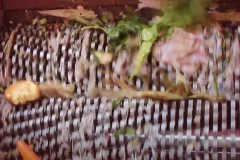
A key challenge for hotels in Africa, as in many parts of the world, is efficient waste management, particularly concerning food waste. The integration of small food waste shredders, like the GDF5 model, presents a viable solution to address this concern.Application in African HotelsEfficient Waste Management: The GDF5 food waste shredder, designed for compact spaces, has gained prominence in African hotels due to its ability to effectively process smaller-scale food waste. Its compact size aligns well with the limited spaces often found in these establishments.Sustainability Drive: These shredders contribute significantly to sustainability efforts in African hotels. By promptly managing food waste, they mitigate foul odors, reduce the risk of pest infestations, and facilitate the decomposition process, aligning with eco-friendly waste management practices.Equipment AdvantagesMany of our users, including our esteemed customers in Africa, often inquire about the exceptional longevity of our GDF food waste
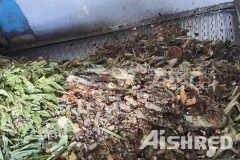
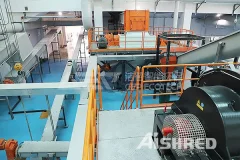
A biodegradable waste shredder is an essential tool in the management of organic waste materials, such as food scraps, yard waste, and other biodegradable items. These shredders play a crucial role in helping the environment in several ways:Enhanced DecompositionBiodegradable waste shredders break down organic materials into smaller, more manageable pieces. This increased surface area facilitates the decomposition process, allowing microorganisms to work more efficiently. As a result, the organic waste decomposes faster, reducing the time it spends in landfills or incinerators.Reduction in Landfill WasteShredding biodegradable waste decreases its volume, meaning less space is needed in landfills. This reduces the burden on landfill sites and extends their lifespan. Additionally, reducing landfill usage helps prevent the emission of harmful greenhouse gases like methane, which are produced when organic waste decomposes anaerobically in landfills.Reduced Transportation CostsSmaller and lighter shredded organic


How to Make Biogas from Food Waste
2023-02-05Food waste is a type of domestic waste, which is rich in organic matter such as vegetables and bones, and can be made into fuel, fermented to produce biogas, or fertiliser. Food waste accounts for about 50% to 60% of domestic waste, so it is important to make biogas from food waste instead of landfill to improve the utilisation rate of domestic waste. At present, domestic waste resource disposal centres generally process domestic waste into RDF fuel rods for power plants, and the production of biogas from food waste requires a clear classification at the source of collection and transportation. As food waste contains more organic matter, oil and grease, etc., and has a higher water content, there is a big difference between the treatment process and making RDF fuel rods. According to our AIShred's project, the biogas from food waste first goes through pre-sorting to remove large pieces of debris, then is shredded by a GDF food waste shredder, then through pre-sieving, organic matter fine sorting, pressing
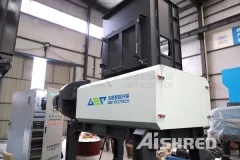
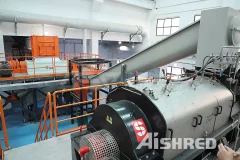
How Food Waste Can be Turned Into Treasure
2022-08-11Food waste is the waste generated by residents in their daily lives and in food processing, catering services and unit feeding activities, including discarded leaves, leftovers, leftover rice, fruit peels, egg shells, tea dregs and bones, etc. Its main sources are household kitchens, restaurants, hotels, canteens, markets and other industries related to food processing. Food waste contains very high levels of moisture and organic matter, which can easily spoil and produce bad odours. After proper treatment and processing, it can be transformed into a new resource. The high organic matter content makes it possible to use it as fertiliser and feed after rigorous treatment, or to produce biogas for fuel or electricity generation, while the oil and grease fraction can be used to prepare biofuels. AIshred can provide a complete front-end shredding and sorting system for volume reduction of the material. The general treatment process is double-shaft shredder + organic matter fine sorting machine + screw press +
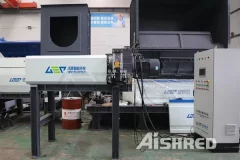
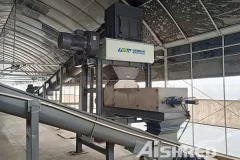
As a professional shredding equipment manufacturer in China, organic waste shredder is one of our hot sale products. There many customers from Philippines who inquiry about the organic waste shredder, so let us make a short introduction of the organic waste shredding process. Organic waste, also known as garbage, is the waste containing organic components in domestic waste. It is mainly kitchen residue, paper, fiber, bamboo and wood, fiber, etc. More than 50% of the municipal solid waste is organic waste. Now the state strongly advocates waste classification treatment, and many users are also buying organic waste shredder for treatment. Organic waste can be classified into recyclable and non recyclable. Therefore, before disposal, the organic waste should be sorted before further disposal. For example, plastic bags, plastic net bags, egg shells, foam boxes, etc. can not be recycled, and they must be sorted out. The vegetable leaves, root stems, green plant residues and husks can be changed through physical
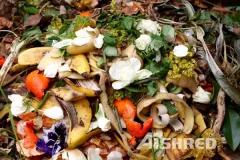
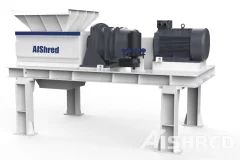
Shredder Machine for Biodegradable Waste
2022-07-13When dealing with biodegradable solid waste, you need a reliable shredder machine. Its role is to shred large pieces of material into small pieces which will greatly reduce its volume. The shreded materials can be used to produce compost and biogas. We do not recommend landfilling, because the biogas generated by landfilling will be directly discharged into the atmosphere and cause climate change. The image above shows the shredder machine provided by AIShred for small to medium biodegradable waste management projects. This shredder can easily handle everything from garden waste, food waste, to organic waste from restaurants, wet markets, slaughterhouses and more. Since it is equipped with high wear-resistant knife components, it can shred animal bones, iron packaging boxes, ice cubes, etc., so this shredder is also often used to destroy various expired food, fish and frozen meat and many more. AIShred can provide both a single shredder and complete solution for biodegradable waste management. Our main
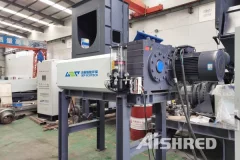
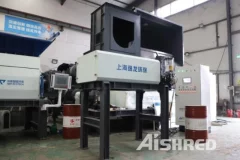
The GD Series are high performance twin shaft shredders that are excellent for both dry and wet applications. They are produced in a variety of sizes and can be used to reduce the size of solid waste, reduce particles to improve the efficiency of manufacturing processes, and recycle expired or damaged goods. GD2 shredder is a compact shredder used for shredding hard substances. It's ideal for working in tight spaces while still providing the power you need to grind food scraps, small bones and even silverware. GD2 shredder is the ideal low cost solution for meat and animal processing plants, food processing plants, hotels/casinos/restaurants, ships and more. The GD3 shredder easily handles tough, difficult-to-process items, including metal chips, seafood and food processing waste, and more. The GD6 and its elder brothers are designed for the most demanding applications. Reinforced shafts and seals allow you to grind solid objects to the required size. They have been tested in a variety of industrial
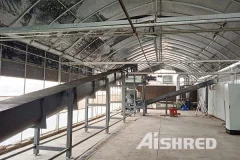
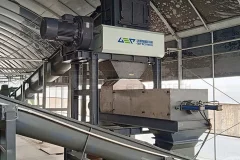
The production of black soldier fly feed requires the use of a food waste shredder to achieve the functions of bag breaking, fiber crushing, bulk material crushing, and dispersing. How to choose a suitable food waste shredder for making black soldier fly feed? Today I would like to recommend such a device to you.Food waste shredder recommendedGDF food waste double-shaft shearing shredder is a shredding machine specially developed and designed for the characteristics of food waste. The equipment has strong material adaptability and is not limited by moisture. Waste oils, raw meat residues, leftovers, bones, lunch boxes and other food wastes are pretreated by shearing and shredding, which lays a good foundation for improving the efficiency of subsequent disposal. Let us see the advantages of GDF series food waste shredder: The key components are made of 304 stainless steel with long service life.The bearing is designed with multiple seals to adapt to the wet and oily environment.High-alloy tool with long

